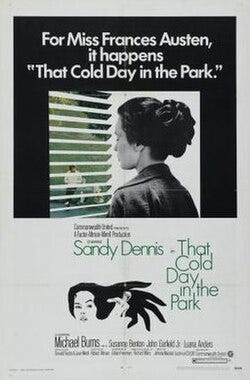Here’s what I watched and read last week…
MOVIES
Wake Up Dead Man (2025), directed by Rian Johnson, is a fun and engaging whodunit. I liked it much more than Glass Onion. Glenn Close is terrific and deserves an Oscar nomination, and Johnson should also be recognized for his writing.
Bugonia (2025), directed by Yorgos Lanthimos, was one I enjoyed—much more than Poor Things. Having written a book on confinement cinema, it was especially cool to see Bugonia embody many of the characteristics I discuss.
The Piano Teacher (2001), directed by Michael Haneke, is a tough film to watch, but it is very good. Some moments reminded me of Caché, particularly in the way Haneke casually depicts violence. This is a film that will stay with me for a long time.
Metropolitan (1990) is a very good comedy directed by Whit Stillman. The film was released just as independent filmmaking was beginning to take off in the United States. Its clever dialogue is one of its strongest components, so it’s no surprise that the film was nominated for Best Original Screenplay. What I especially love, though, is the upper-class setting Stillman creates on such a low budget. This is what separates Metropolitan from other indie films of the period, such as Richard Linklater’s Slacker (1991) or Kevin Smith’s Clerks (1994).
The Grandmaster (2013), directed by Wong Kar-wai, is a beautiful martial arts film about Ip Man (Tony Leung). The fight sequences are awesome, and both Tony Leung and Zhang Ziyi are excellent. At times, I found myself lost or confused by the film’s plotting, even on this second viewing. My reaction is similar to how I once felt about the Coen brothers’ Miller’s Crossing, which I now consider one of their masterpieces, though I didn’t at first. I’m beginning to feel the same way about The Grandmaster, which makes me want to watch it again.
The Lord of the Rings: The War of the Rohirrim (2024) is a very cool animated film set 200 years before the Lord of the Rings trilogy. I had to look up some of the names and places of Middle-earth to re-familiarize myself with Tolkien’s fantasy world.
Christmas Vacation (1989). I watch it every Christmas and still love it. Chevy Chase buying lingerie is one of my favorite scenes, and of course I love the moment when he loses it after he doesn’t get his bonus.
TV
I very much enjoyed Netflix’s The Beast in Me. It has some great Hitchcockian moments and plenty of cool twists. The series reminded me of 1990s thrillers such as Primal Fear, The Game, and The Talented Mr. Ripley. Arguably, the best thing about the miniseries is Claire Danes and Matthew Rhys—both performances are excellent.
Plubribus is definitely one of the best TV shows of the year. Vince Gilligan has created an intriguing and highly engaging story, and I can’t wait for the next season.
BOOKS
We Live Here Now (2025) by Sarah Pinborough is an excellent Gothic supernatural novel and a new take on the haunted house narrative. I won’t say too much about the plot, but I love the way the book shifts points of view between Emily and Freddie—very effective. The title feels like an homage to Shirley Jackson. Definitely one of the best books I’ve read this year, and I’m so glad Stephen King recommended it.
Surplus Enjoyment (2022) by Slavoj Žižek is one of his best books since Sex and the Failed Absolute. Surplus enjoyment is a Lacanian notion: enjoyment always involves suffering—enjoying too much—or what Lacan calls jouissance. For example, Žižek views conspiracy theorists as a form of surplus enjoyment. They doubt all existing theories and then construct one grand explanation, which, for Žižek, gives them an overwhelming sense of enjoyment. But it is also detrimental to the big Other—the symbolic structures that hold society together. This is why jouissance is linked to the death drive: suffering for one’s enjoyment. Žižek offers many other examples, but the highlight of the book is his reading of Todd Phillips’ Joker.
The Uncool by Cameron Crowe might be one of my favorite reads this year. It chronicles Crowe’s experiences writing for Rolling Stone magazine in the 1970s. If you love classic rock, this is a must-read. I also recommend Crowe’s book on filmmaker Billy Wilder.























